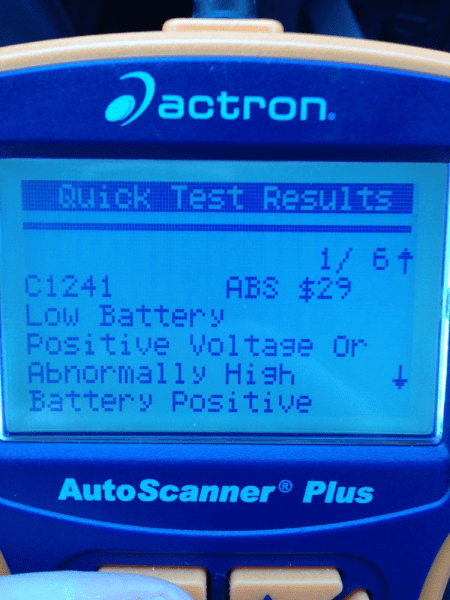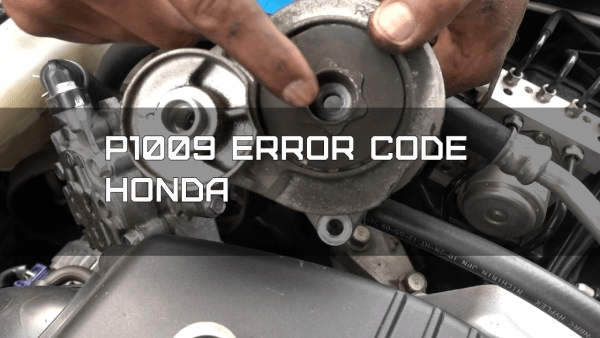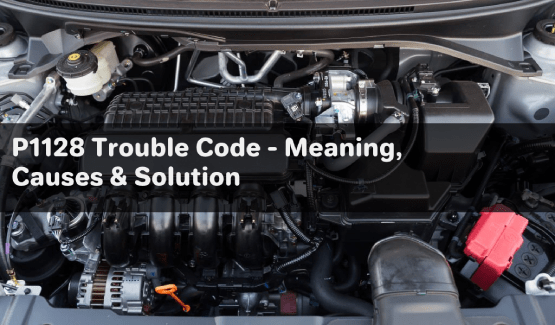If your Chevy Sonic displays Code 52, you must replace the timing belt. If your car’s timing belt is destroyed, your gears will not be able to keep time properly, and your engine will break down. So as soon as you get the Code 52, you know it’s time to replace the timing belt.
- How Do You Reset Code 52 on a Chevy Sonic?
- Can I Keep Driving the Car with This Warning? For How Long?
- What Are the Early Signs of Timing Belt Problems?
- How Do I Check My Timing Belt?
- Does the Timing Belt Give Warning Before Failing?
- How Much Is Replacing the Timing Belt On a Chevy Sonic?
- How Long Do Timing Belts Usually Last?
Sensors and diagnostic fault codes unique to each vehicle let mechanics pinpoint the source of mechanical failure. For example, the Chevrolet Sonic has a unique error or diagnostic codes, as with each vehicle. Maintenance reminder codes, as opposed to fault codes, are what you’ll see on the Chevy Sonic’s dashboard when there’s anything wrong with the automobile.
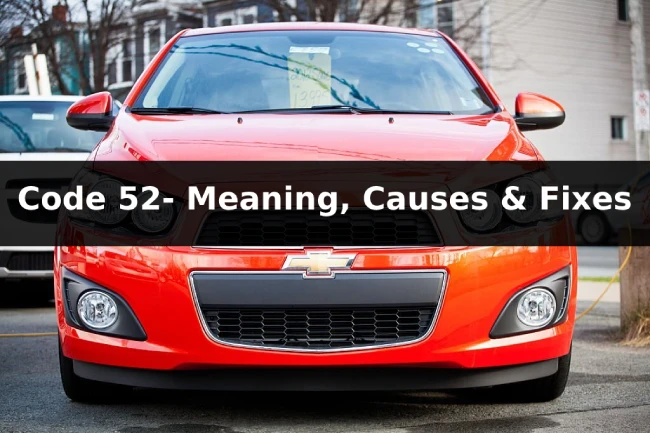
In addition, Code 52 is often triggered at a mileage threshold of over 100,000 miles driven. After that mileage threshold, the timing belt often begins to show damage symptoms. As a result, it becomes more susceptible to failure, so you must maintain your vehicle and replace the timing belt to avoid future engine difficulties.
How Do You Reset Code 52 on a Chevy Sonic?
If the Chevrolet Sonic displays diagnostic code 52, you will need to get the timing belt replaced. Resetting the code 52 error without replacing the belt is dangerous to the engine and should be avoided at all costs. If, after making the replacement, error 52 still appears on the dashboard’s control panel, you may clear it by doing the procedures outlined below.
You must switch off the vehicle’s engine before attempting to reset the error code 52 since doing so might put you in danger if you try to fiddle with the car’s inner workings while the engine is running. The fuse block is located beneath the dashboard, to the right of the steering wheel, and must be accessed after the engine has been turned off.
Once you’ve discovered the fuse block, remove the cover to see the underlying layout holding the fuses, and then proceed to remove some of the fuses. A group of small fuses of various colors with numbers written in them is taped to a board.
For example, fuse numbers 14, 17, and 25 must be removed; if your model lacks #17, fuses 14 and 25 must be removed. After three minutes, return the fuses to their proper slots. After removing the fuses, write down where they came from so you can put them back in the same spot.
Can I Keep Driving the Car with This Warning? For How Long?
If your car’s timing belt is broken, it will not start. Unfortunately, the damage will have been done by the time the belt gives out, rendering your vehicle completely undrivable. Get the car towed to a garage as soon as possible.
What Are the Early Signs of Timing Belt Problems?
The following are signs that your timing belt may be broken or worn out. If you see any of these signs, it’s time to schedule an inspection of your timing belt by a professional mechanic.
1. Rough Engine Idle / Idle of a Motor That Struggles to Maintain a Stead
Various engine parts and components are rotated by timing belts, with teeth designed to grasp gears. Timing belt slippage away from gears will occur if these teeth break or become brittle. This will cause the teeth to fall onto the gears and cause a shock in the motor. Worse, the engine will eventually stall out due to incorrect camshaft timing.
2. Misfire of the Engine Cylinders
The engine’s firing rate may be in jeopardy if the timing belt is worn. If the timing belt comes loose from the gears and slides onto the camshaft, the valves on one of the cylinders will open and shut prematurely. If it occurs, the belt has to be changed immediately to prevent an engine misfire. You risk ruining the engine by putting off a belt replacement.
3. Vehicle Exhaust Smoke
Exhaust fumes from a vehicle in the dead of winter, when the air is dry and frigid, it might be difficult to know whether the massive volumes of smoke from your tailpipe are truly harmless steam or water vapor. On the other hand, if excessive smoke doesn’t seem normal for the winter, it might be a timing belt issue.
Each cylinder features two vents—one for exhaust and one for fresh air—at its top. These apertures open and close in time with the movement of the cylinders and the camshaft. A worn timing belt may cause this to become unsynchronized, which will result in the unwanted air intake and exhaust release at the wrong periods.
As a consequence, there will be a great deal of smoke emanating from your tailpipe.
4. Low Oil Pressure Warning Light
Fourthly, a warning light for low oil pressure has been activated due to a decline in oil pressure. The timing belt turns the camshaft’s gears. A missing tooth or two on the camshaft might result from a belt that skipped due to poor timing.
There’s a chance that a few of these bits may end up in the oil pan, causing the oil pressure to decrease in the engine’s base. Because of this, the motor will stop working entirely. Therefore, the motor will need to be completely rebuilt if it is to be saved. A hole in the piston or a faulty valve is cause for concern at number five. When the timing belt is severed or breaks, it’s the worst possible symptom. Because of this, the crankshaft might start spinning independently of the camshaft’s rotation.
When this occurs, the moving piston will bump against the opening valves. The piston or valves might bend if you do this. By turning the engine off as soon as this symptom appears, you may be able to prevent additional damage to the engine and save it from total failure.
How Do I Check My Timing Belt?
First, check the belt’s outside to determine if any hairline cracks have appeared. The metal reinforcements within the timing belt make it exceptionally sturdy, and the rubber covering makes it easy to replace if it ever wears out. There shouldn’t be any huge cracks or missing portions of rubber. Cracks in the belt’s beautiful outside covering is normal and should not be cause for alarm, but extensive surface cracking might suggest the belt is badly worn.
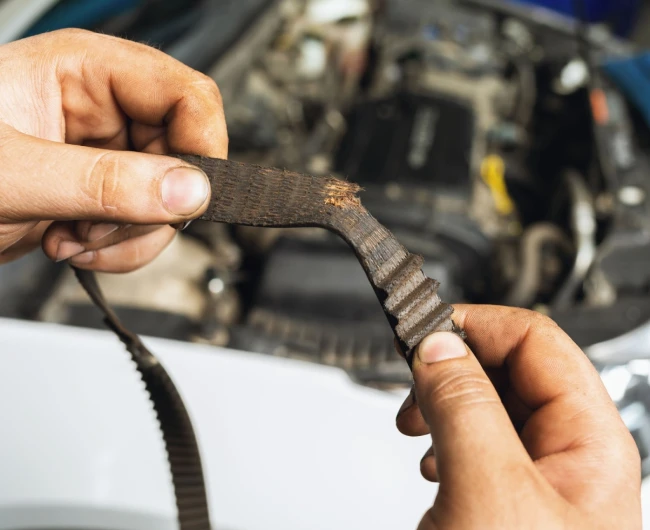
Next, you should carefully turn the belt over and examine the teeth on the underside. The location that is farthest away from both pulleys is ideal for this. If you can’t “flip” the belt, at least you can peek beneath it all the way around.
Don’t think you can live with a cracked tooth for a while since it’s not too big a deal because even one cracked tooth may cause many problems. Because of the missing tooth on the rear, your timing belt may “jump the timing” even if it doesn’t break.
If this occurs, the spark plugs and valves won’t fire in unison, resulting in poor engine performance. The slack in the belt should be measured by twisting it. Too much play might result if it can be turned more than halfway around. Before making any changes to your vehicle, be sure to consult the owner’s handbook.
Although this is modifiable, it is frequently a lengthy process. It’s preferable to err on the side of caution rather than regret later
Does the Timing Belt Give Warning Before Failing?
Because the timing belt might break without warning, it’s best to replace it as soon as possible if you’re approaching the replacement mileage. However, there are instances when the vehicle may signal that the belt needs replacing.
One should be aware of a potential threat if their car has more than 70,000 mileage on it. It’s a little piece, but your engine will be ruined if it breaks before you replace it. It’s a tragic but all too familiar story: someone is driving down the road when their seat belt breaks.
How Much Is Replacing the Timing Belt On a Chevy Sonic?
Labor hours are a major factor in determining how much it will cost to repair a timing belt. After all, the timing belt and other parts may be a real pain to get at in certain vehicles. To that end, labor costs should be lower for smaller-engined budget automobiles. However, the price will increase for vehicles with larger engines, such as SUVs and trucks.
You may expect to spend between $300 and $500 to replace a timing belt (more for larger cars, trucks, and SUVs). The cost of a new timing belt is often less than $50, but the labor involved in installing it may easily exceed $200. The price of labor may be expected to range from $250 to $450 or more.
How Long Do Timing Belts Usually Last?
A timing belt must be replaced periodically. This will often occur every 75,000 to 100,000 miles. For a more specific timetable, see your car’s owner manual. Timing belt replacement is not something that can be put off forever without serious consequences. One day, the belt will snap, and your engine might be severely damaged, costing you thousands of dollars. The potential consequences are too high to consider.
If you found this article useful, here are some more Chevy-related guides:
- P2227 Chevy Cruze: Meaning, Causes & Fixes
- P0700 Chevy Silverado: Meaning, Causes, and Solution
- P1101 Chevy Cruze: Meaning, Causes, and Solution
- 7e8 Engine Code Chevy: Causes, Symptoms, and How to Fix
- P00B7 Chevy Cruze – Symptoms, Causes, and Detailed Troubleshooting Steps
- C0561 Chevy – All the Possible Causes, Symptoms, and Fix Guide
Every since I was a little boy, I can remember spending the afternoons in my dad’s repair shop. I got my first car at 16 and it was the best feeling ever!
I have contributed to various automotive publications but decided it’s finally time to settle for something constant.

